Showing Spotlights 393 - 400 of 2780 in category All (newest first):
 Rather than growing vaccines in bioreactors, a new generation of biotechnology companies designs instructions that the body then can use to produce its own therapy. These novel vaccines exploit the process by which cells build proteins from the information encoded in a single-stranded molecule called messenger RNA (mRNA). They are enabled by the revolutionary nature of new industrialized biotechnology platforms that exploit breakthroughs in biological engineering and artificial intelligence.
Rather than growing vaccines in bioreactors, a new generation of biotechnology companies designs instructions that the body then can use to produce its own therapy. These novel vaccines exploit the process by which cells build proteins from the information encoded in a single-stranded molecule called messenger RNA (mRNA). They are enabled by the revolutionary nature of new industrialized biotechnology platforms that exploit breakthroughs in biological engineering and artificial intelligence.
Jan 28th, 2021
 OLED technology is based on the phenomenon that certain organic materials emit light when fed by an electric current. OLED technologies makes it possible to manufacture ultra flat, very bright and power-saving OLED televisions, windows that could be used as light source at night, and large-scale organic solar cells. Since the development of the first viable OLED device in 1987, and tens of thousands of patents and research articles later, OLED device technology is moving towards its fourth generation.
OLED technology is based on the phenomenon that certain organic materials emit light when fed by an electric current. OLED technologies makes it possible to manufacture ultra flat, very bright and power-saving OLED televisions, windows that could be used as light source at night, and large-scale organic solar cells. Since the development of the first viable OLED device in 1987, and tens of thousands of patents and research articles later, OLED device technology is moving towards its fourth generation.
Jan 27th, 2021
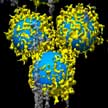 Scientists developed a new method to better understand how nanomedicines interact with patients' biomolecules. When nanoparticles enter human blood, they come into immediate contact with various biomolecules. These biomolecules form a coating layer on the nanoparticle surface - the so-called biomolecular corona - thereby imparting a unique biological identity to the nanoparticle, which could be very different from the pristine nanoparticle surface.
Scientists developed a new method to better understand how nanomedicines interact with patients' biomolecules. When nanoparticles enter human blood, they come into immediate contact with various biomolecules. These biomolecules form a coating layer on the nanoparticle surface - the so-called biomolecular corona - thereby imparting a unique biological identity to the nanoparticle, which could be very different from the pristine nanoparticle surface.
Jan 25th, 2021
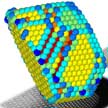 Gold nanoparticles are of great importance for a wide range of industrial processes such as CO oxidation, water-gas shift reactions and oxygen reduction at the cathode of hydrogen fuel cells. Scientists investigated the three-dimensional atomic structure of gold nanoparticles at high temperatures. By combining two powerful techniques, electron tomography with atom counting, researchers tracked the morphology changes in gold nanoparticles when heated.
Gold nanoparticles are of great importance for a wide range of industrial processes such as CO oxidation, water-gas shift reactions and oxygen reduction at the cathode of hydrogen fuel cells. Scientists investigated the three-dimensional atomic structure of gold nanoparticles at high temperatures. By combining two powerful techniques, electron tomography with atom counting, researchers tracked the morphology changes in gold nanoparticles when heated.
Jan 22nd, 2021
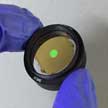 Researchers have developed a high-throughput, scalable nanocomposite printing method to manufacture metalenses at low cost, paving the way to commercializing them. The nanocomposite material, which is also suitable for high-efficiency metasurfaces, can be molded into metalenses just by one step of printing without any secondary operations such as thin-film deposition or plasma etching. The researchers synthesized their nanocomposite by dispersing silicon nanoparticles in the matrix of UV-curable resin to achieve a high-refractive index to increase the efficiency of the metalenses. The printing mold is reusable, so the large-scale metalenses can be printed rapidly and repeatedly.
Researchers have developed a high-throughput, scalable nanocomposite printing method to manufacture metalenses at low cost, paving the way to commercializing them. The nanocomposite material, which is also suitable for high-efficiency metasurfaces, can be molded into metalenses just by one step of printing without any secondary operations such as thin-film deposition or plasma etching. The researchers synthesized their nanocomposite by dispersing silicon nanoparticles in the matrix of UV-curable resin to achieve a high-refractive index to increase the efficiency of the metalenses. The printing mold is reusable, so the large-scale metalenses can be printed rapidly and repeatedly.
Jan 12th, 2021
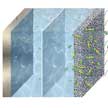 In the search for battery technologies that one day could replace lithium-ion batteries and meet power demands within the size and cost constraints of car makers, aerospace and other industries, researchers are exploring lithium-air batteries (LAB). Generally, to make LAB technology practical, two goals are highly important: a novel cathode that uses a highly active and stable catalysts to enhance ORR and OER kinetics; and a proper electrolyte design that can promote the solvent-based growth mechanism for the discharge products.
In the search for battery technologies that one day could replace lithium-ion batteries and meet power demands within the size and cost constraints of car makers, aerospace and other industries, researchers are exploring lithium-air batteries (LAB). Generally, to make LAB technology practical, two goals are highly important: a novel cathode that uses a highly active and stable catalysts to enhance ORR and OER kinetics; and a proper electrolyte design that can promote the solvent-based growth mechanism for the discharge products.
Dec 29th, 2020
 An overview of feedback-driven, skin-like multifunctional sensor systems, from the basic material/structural design to applications. Emerging functional nanomaterials and innovative structures for constructing flexible sensors are highlighted, followed by an introduction of various integrated flexible sensor systems. Several categories of feedback sensor systems are described in terms of prosthesis- and AR/VR-based human-machine interfaces, smartphone-based approaches for point-of-care detection, and smart wearable displays for direct signal visualization. The profound significance of these innovations is also highlighted.
An overview of feedback-driven, skin-like multifunctional sensor systems, from the basic material/structural design to applications. Emerging functional nanomaterials and innovative structures for constructing flexible sensors are highlighted, followed by an introduction of various integrated flexible sensor systems. Several categories of feedback sensor systems are described in terms of prosthesis- and AR/VR-based human-machine interfaces, smartphone-based approaches for point-of-care detection, and smart wearable displays for direct signal visualization. The profound significance of these innovations is also highlighted.
Dec 28th, 2020
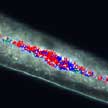 While plastic debris of any size is harmful to the marine flora and fauna, recent research suggests that the smallest of these plastics, nanoplastics, affect the composition and diversity of our intestinal microbiome and that this can cause damage to our health. A novel optical spectroscopy-based methodology in the VIS-NIR range, capable for differentiating between chemically different micro- and nanoplastics confined within invertebrate intestines. The technology is based on dark-field microscopy, which is capable of visualizing particles smaller than the bright-field optical microscopy resolution limit.
While plastic debris of any size is harmful to the marine flora and fauna, recent research suggests that the smallest of these plastics, nanoplastics, affect the composition and diversity of our intestinal microbiome and that this can cause damage to our health. A novel optical spectroscopy-based methodology in the VIS-NIR range, capable for differentiating between chemically different micro- and nanoplastics confined within invertebrate intestines. The technology is based on dark-field microscopy, which is capable of visualizing particles smaller than the bright-field optical microscopy resolution limit.
Dec 22nd, 2020
 Rather than growing vaccines in bioreactors, a new generation of biotechnology companies designs instructions that the body then can use to produce its own therapy. These novel vaccines exploit the process by which cells build proteins from the information encoded in a single-stranded molecule called messenger RNA (mRNA). They are enabled by the revolutionary nature of new industrialized biotechnology platforms that exploit breakthroughs in biological engineering and artificial intelligence.
Rather than growing vaccines in bioreactors, a new generation of biotechnology companies designs instructions that the body then can use to produce its own therapy. These novel vaccines exploit the process by which cells build proteins from the information encoded in a single-stranded molecule called messenger RNA (mRNA). They are enabled by the revolutionary nature of new industrialized biotechnology platforms that exploit breakthroughs in biological engineering and artificial intelligence.

 Subscribe to our Nanotechnology Spotlight feed
Subscribe to our Nanotechnology Spotlight feed





